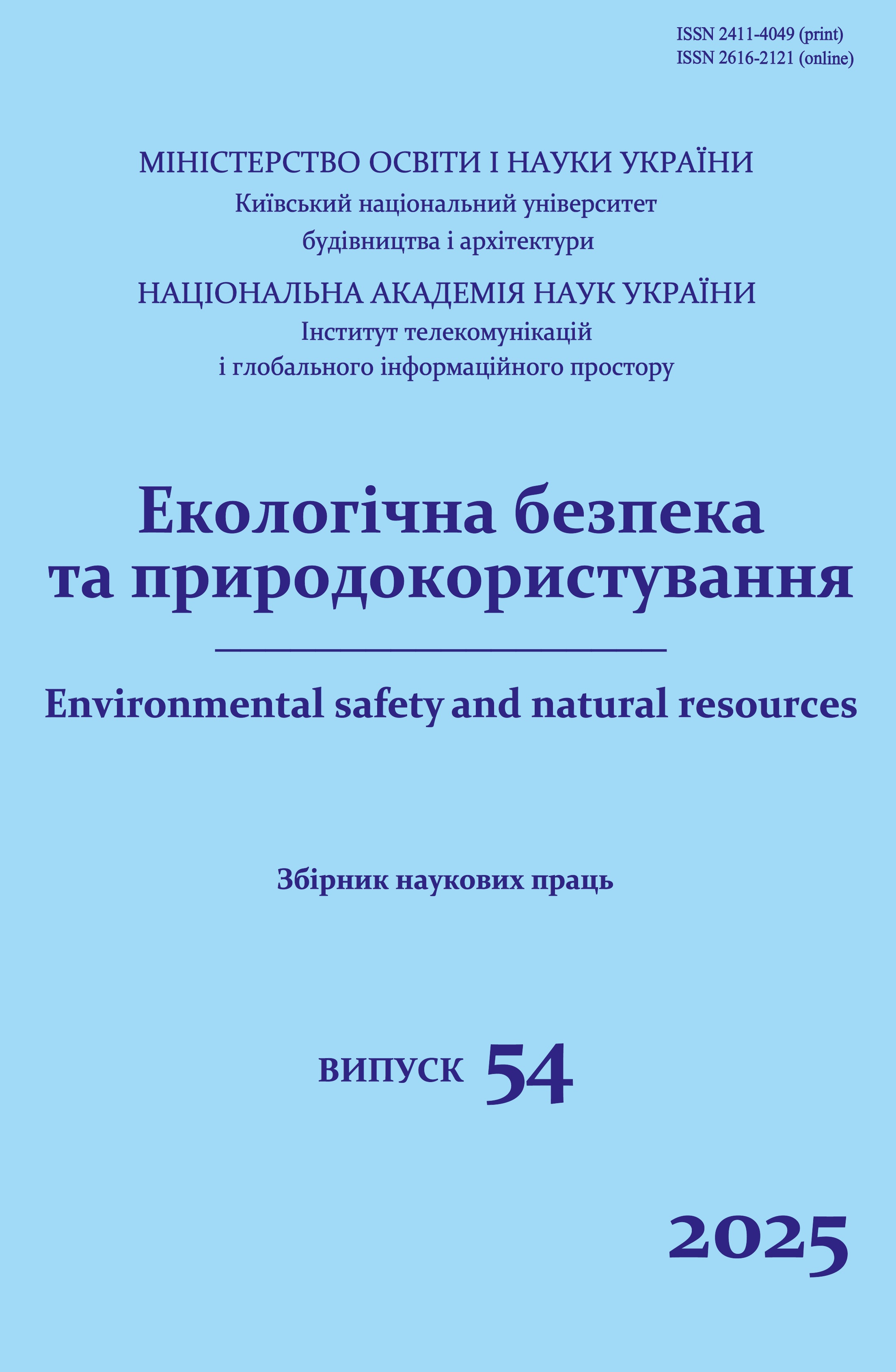Mathematical model for aerial image decoding and automated analysis of urban infrastructure
DOI:
https://doi.org/10.32347/2411-4049.2025.2.154-163Keywords:
information technologies, image interpretation, aerial photography, geographic information systems, object recognition, aerial data processing, machine learningAbstract
This study addresses a scientific and practical challenge focused on improving the monitoring of urbanized areas by utilizing remotely piloted aerial systems (RPAS) to enhance the efficiency of detecting urban infrastructure objects (UIOs). The key factors influencing the accuracy and timeliness of UIO identification based on aerial imagery have been analyzed. The study formulates the main requirements for the image interpretation process, emphasizing the need to ensure high levels of detection speed and reliability.
Particular attention is paid to the prospects of automating the recognition of UIOs using computer vision technologies and deep learning methods based on artificial neural networks. Within the framework of the research, a conceptual mathematical model for automated image interpretation is proposed, which provides for the detection of urban infrastructure objects through computer vision algorithms implemented via artificial intelligence technologies.
Integration of the developed model into the image processing system makes it possible to significantly improve the operational efficiency of UIO recognition while maintaining an acceptable level of interpretation accuracy. The application of such solutions is particularly relevant for real-time monitoring of changes in urban development, the condition of transportation infrastructure, engineering networks, and technogenic facilities. The use of machine learning algorithms not only facilitates object detection but also enables their functional classification with a high degree of accuracy.
Implementation of the proposed approach creates prerequisites for the automated processing of large volumes of visual data, ensuring timely responses to changes in the urban environment.
Prospects for further work include: accumulation and structuring of a specialized database of aerial photographs with marked objects of urban infrastructure, creation of a comprehensive method for automating the decoding of aerial photographs with its subsequent software implementation, implementation of comprehensive experimental studies aimed at verifying the effectiveness of the proposed mathematical model according to the criteria of efficiency and reliability.
References
Trofymchuk, O., Kalyukh, Y., & Hlebchuk, H. (2013). Mathematical and GIS-modeling of landslides in the Kharkiv region of Ukraine. In: Landslide Science and Practice: Spatial Analysis and Modelling (pp. 347–352). Springer, Berlin, Heidelberg.
Chyzhevskyi, B. I., & Lytvynenko, D. O. (2020). Automation of UAV-based aerial data processing for civil infrastructure needs. Modern Information Technologies, (3)75, 66–72.
Minenko, O. V., & Yakovenko, P. H. (2021). Computer vision in environmental monitoring tasks of urbanized regions. Environmental Problems of Megacities, 4(12), 88–94.
Abramenko, S. Yu., & Nosov, P. V. (2022). Application of neural networks for automatic decoding of objects in satellite images. Information Technologies and Control Systems, 1(41), 34–41.
Andreeiev, S. M., Kreta, D. L., & Radchuk, V. V. (2008). Development of cartographic models of marine areas and coastal zones using geoinformation technologies. In: Modern Information Technologies for Managing Environmental Safety, Natural Resource Use, and Emergency Response: Proceedings of the 7th International Scientific-Practical Conference. Kyiv – Kharkiv – AR Crimea (pp. 112–117).
Trysnyuk, V., Trysnyuk, T., Varavin, D. (2022). Geomodels of ecological safety of the urban environment under pandemic threats using the example of Kyiv. Ecological safety and balanced resource use, 1(25), 7–13. https://doi.org/10.31471/2415-3184-2022-1(25)-7-13
Roboflow, Inc. (2023). Roboflow – Online platform for image dataset creation and annotation. Retrieved from https://roboflow.com
Downloads
Published
How to Cite
Issue
Section
License
Copyright (c) 2025 Vasyl Marushchak

This work is licensed under a Creative Commons Attribution 4.0 International License.
The journal «Environmental safety and natural resources» works under Creative Commons Attribution 4.0 International (CC BY 4.0).
The licensing policy is compatible with the overwhelming majority of open access and archiving policies.

